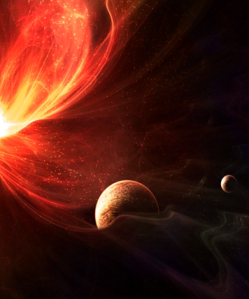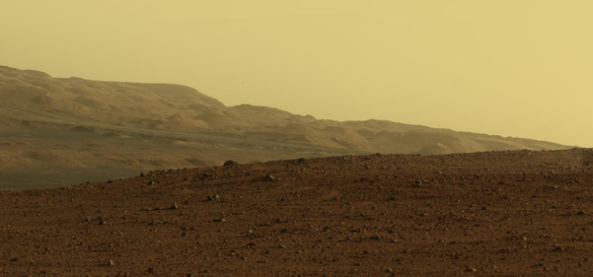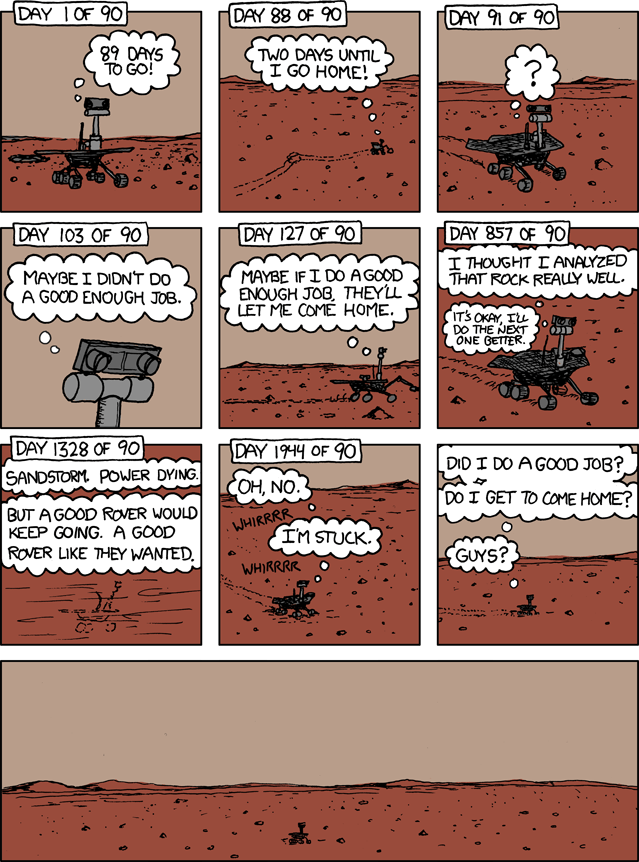Today, NASA released another poster in its wonderful ‘Exoplanet Travel Bureau‘ series. I’ve been a big fan of these prints since their inception; a fun and colorful outreach project that captures the diversity and exotic nature of these newly discovered worlds. However, they could be interpreted as more than just a NASA public relations project. If we consider art as a particular subjective interpretation of reality, subject to the fads, fashions and cultural context of the time, then these posters actually say quite a bit more!
They not only portray our early depictions of these enigmatic worlds, but our interpretations of what these planets may be like also sheds some light on our view of ourselves and the future. All the posters have a clearly evident retro-futuristic theme. A view of the future, but from the past. From the font choices, fashions and colour schemes, these posters are depicting the future of humanity, but through optimistic eyes of 1960s design, when flight and space exploration were developing at extraordinary rates, and holidaying on the Moon or Mars seemed only years away. By drawing on retrofuturism and space-age pop-art consumerism, the artists are trying to capture the anticipation and optimism of mid-20th century space science, and focus that enthusiasm on the hunt for Earth-like worlds, perhaps drawing parallels between the rate of planet discovery and that of aeronautics and space exploration during the 60s.
The newest poster in the series depicts exoplanet PSO J318.5-22, a ‘rogue’ planet that has been ejected from its star system and is now sailing through interstellar space, but has since been turned into a party location by our intrepid descendants. To be honest, I really like this print. The throw-back to 1960s retro-futurism is undeniable, and this poster oozes cool and class – an elegant couple in minimalist spacesuits step out into the perpetual nightlife of a rogue exoplanet, a world so bizarre and strange that a few years ago the very idea of would have sounded preposterous. But here we are, turning an astronomical absurdity into a planetary-scale nightclub, all the while looking suave and beautiful as only humans can do. The simple duality of colors really capture the cold, cool and classy vibe, using blues, purples and silvery hues that gleam like auras off our descendants’ ‘nightclub-in-space’ regalia. In the background, figures stand suspended what appears to be a walkway along one of the planet’s icy rings, as more spaceships replete with party-goers arrives in sequence.
The three other posters in the series also adhere to a similar visual style. The print for Kepler-186 f depicts a couple exploring the striking red vegetation of this planet, the first Earth-size planet discovered in the potentially ‘habitable zone’ around another star. Its host star, Kepler 186, is a red dwarf, a much smaller star that emits more light in the red and infra-red portion of the electromagnetic spectrum than our Sun, and it is thought that if photosynthetic organisms were to exist on the surface of Kepler 186 f, they would be red in colour to exploit this fact. An interesting aspect of this poster is the white picket fence, a staple of American suburban utopia, that separates the green and red vegetation thereby accentuating the ‘grass is greener’ trope. Here, Earth-bound familiarity is juxtaposed against the alien backdrop of red foliage, and is proof that no matter how weird or exotic these worlds may be, the power of human culture will eventually make even the strangest of environments familiar to us.
When considering the artists’ interpretation of Kepler-16b, it is clear that the binary star system is the draw here. The unusual stellar architecture of this world would indeed make for a stunning double-sunset. Often considered a romantic activity best shared as a couple on Earth, here a single human figure enthralled by the graceful choreography of the binary is accompanied by two shadows instead. Although likely much too cold for life, Kepler 16b is portrayed in familiar desert tones of ochra and red, perhaps reminiscent of planets in binary systems in popular culture.
So what if HD 40307 g is eight times as massive as the Earth? We can turn this to our advantage, and thrill-seeking human skydivers are invited to plunge at incredible speeds through its (probably) thick gaseous atmosphere. Why? Because we can. Because we’re humans and evidently the whole galaxy is our playground.
The fact we know relatively little about these planets actually helps in this case, as imagination and artist license can run rampant. Significantly, these prints frame these worlds as utilitarian or ‘useful’, but not in the traditional economic or scientific sense. They’re useful and subservient to a human species so technologically advanced that even our recreation and tourism is now planetary in scale. There’s not much science being depicted, and that’s fine. These are travel posters for the future middle-class, an invitation to come for the exotic sights and stay for the booze, hiking or skydiving. The limited depiction of ‘life’ in these posters is somewhat unimaginative – a few red trees and the tinge of green on a continent, but I think that’s for the best at this stage. Overly stylized images of alien life would detract from the fact that humans are as much the focus in these posters as the alien planets.
The fact that we’re portrayed as out there using entire worlds for our recreation and fun speaks to the optimism of the search for extrasolar planets, and is well mirrored by the retro style employed by the artists. Unfortunately, being able to travel to these worlds is, in reality, completely unfeasible with contemporary technology, which makes the promises of lavish parties in deep space somewhat bittersweet. Nevertheless, I hope that NASA continues to publish posters in this series, and I look forward to seeing their next effort!











